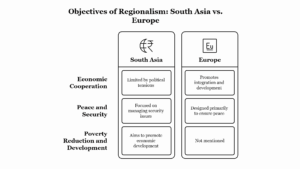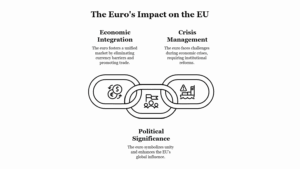Canada has a long history of immigration, with diverse communities contributing to the country’s social, cultural, and economic fabric. Among these immigrant groups, white immigrant groups have played a significant role in shaping the nation’s identity, particularly in the development of early Canadian society. Historically, these groups have predominantly come from European countries, with the British and French forming the earliest white immigrant communities, followed by waves of immigration from other parts of Europe, especially in the 19th and 20th centuries. The term “white immigrant groups” generally refers to those of European descent who have immigrated to Canada, and their experiences have been marked by both assimilation and the development of distinct ethnic communities within the broader Canadian society.
1. Historical Background of White Immigration to Canada:
Canada’s history of white immigration can be divided into several phases, each marked by changes in policy and the economic conditions of both Canada and the countries from which immigrants came.
1.1 Early Immigration (1600s – 1800s):
The first significant wave of white immigrants to Canada came from France in the early 17th century, with French settlers establishing permanent colonies in areas like New France (present-day Quebec). However, the British took control of Canada after the Treaty of Paris (1763), leading to an influx of British settlers. The British Empire facilitated immigration to Canada by offering land grants and incentives to encourage settlement, particularly in the regions of Ontario, Nova Scotia, and Quebec.
The early white immigrants played a crucial role in establishing the foundation of Canadian society. The French Canadians in Quebec maintained their language, religion (Catholicism), and culture, which has shaped the French-Canadian identity that still exists today. Meanwhile, British settlers contributed to the development of Canada as a part of the British Empire, and many settlers adhered to the British Protestant religious and cultural traditions.
1.2 19th Century Immigration:
The 19th century saw an increase in European immigration to Canada. With the expansion of the railway system, especially the Canadian Pacific Railway, the Canadian government sought to populate the Western provinces (such as Alberta, Saskatchewan, and Manitoba) through immigration from Europe. Immigrants from the United Kingdom were the largest group, followed by people from countries like Ireland, Germany, Poland, and Scandinavia. These immigrants were often attracted by the promise of land grants and the possibility of a better life in Canada’s vast agricultural lands.
During this period, Canadian immigration policies began to favor white European settlers, with the government’s preference for people from Anglo-Saxon backgrounds reflecting the British colonial mindset. White immigrant groups from Europe helped populate both rural and urban areas, contributing to the economic expansion of Canada, particularly in agriculture, industry, and transportation.
1.3 Post-World War Immigration (20th Century):
After World War II, Canada experienced a significant shift in its immigration policies, gradually transitioning from a preference for British immigrants to a more diverse range of European settlers. This period saw large numbers of immigrants from countries such as Italy, Greece, Ukraine, and the Netherlands. These groups contributed to the burgeoning urbanization of Canada, especially in cities like Toronto, Montreal, and Vancouver.
The postwar period marked an important shift in Canada’s national identity, as white immigrants from Southern and Eastern Europe brought with them their distinct cultures, languages, and traditions. The rise of industrialization in cities led to the establishment of vibrant immigrant communities, with Italian, Greek, and Ukrainian Canadians creating close-knit neighborhoods and cultural institutions.
2. Ethnic and Cultural Contributions of White Immigrant Groups:
White immigrant groups have played a crucial role in the development of Canadian culture and identity. While they have generally been able to assimilate into Canadian society over time, many have maintained distinct cultural identities through language, religion, and traditions.
2.1 Religious Influence:
Most white immigrant groups in Canada have been either Catholic or Protestant in their religious practices, reflecting the religious backgrounds of European countries. For example, French Canadians in Quebec are predominantly Catholic, and their religious institutions have played a central role in shaping Quebec’s society and culture. Immigrants from Italy, Poland, and other European Catholic countries continued this tradition, with Catholicism remaining a significant part of Canadian life.
Similarly, immigrants from Protestant countries, such as the United Kingdom and Scandinavia, contributed to the Protestant religious traditions in Canada, particularly in areas like Ontario and British Columbia. Over time, however, the influence of religion has declined, but the historical presence of these religious communities continues to shape Canada’s cultural landscape.
2.2 Language and Education:
The languages of white immigrant groups, particularly French and English, have been foundational to Canada’s bilingual nature. French remains the official language of Quebec, where French Canadians have preserved their language and culture, even as other regions of Canada are primarily English-speaking. In the 20th century, the English-speaking immigrants from Britain, Ireland, and other European countries contributed to Canada’s English-speaking majority.
Moreover, these communities often established their own schools, churches, and social clubs, where they could continue their cultural practices and language traditions. In the post-World War II era, the establishment of ethnic schools and cultural institutions further allowed these groups to preserve their linguistic heritage while adapting to Canadian society.
2.3 Cultural Celebrations and Festivals:
White immigrant groups also contributed to the diversification of Canadian cultural practices. Festivals such as St. Jean Baptiste Day (celebrated by French Canadians), Oktoberfest (celebrated by German Canadians), and Ukrainian festivals in places like Manitoba are examples of how these communities have maintained their cultural traditions in Canada. Such celebrations not only showcase the cultural diversity of Canada but also promote understanding and tolerance among various groups within Canadian society.
3. White Immigrant Groups and Assimilation:
White immigrant groups in Canada have generally experienced assimilation into the broader Canadian society, though the process has been complex and varied. Early British and French immigrants were seen as the dominant cultural groups, but as waves of immigration from Eastern and Southern Europe occurred, these new groups faced challenges in assimilating into a predominantly Anglo-centric society.
However, over time, white immigrant groups from these regions have successfully integrated into Canadian society. They have become part of the dominant Anglo-Canadian identity, contributing to the multicultural nature of modern Canada. At the same time, their distinct cultural characteristics—such as cuisine, customs, and festivals—continue to enrich Canada’s overall identity.
4. Conclusion:
White immigrant groups have played a foundational role in shaping the identity of Canada, particularly through their cultural, economic, and social contributions. From early French and British settlers to later waves of European immigrants, these groups have helped build the nation both economically and culturally. Today, while the Anglo-Saxon cultural heritage remains dominant in many respects, the rich history of white immigration in Canada continues to influence the country’s diverse and multicultural society.







Leave a Reply